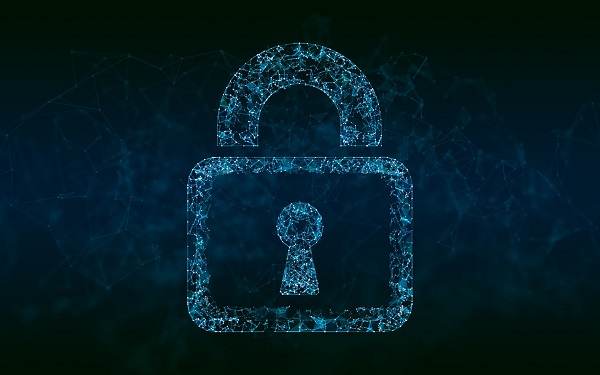
Traditionally, bad guys aka thieves are mostly attracted to the most valuable assets. No exception on the most valuable asset of this modern world either. Yes, in this data driven world, information or data is the most lucrative fruit that the cybercriminals are after. In this article we will know about data breach, how it occurs, steps as well as types of data theft and more.
What is Data Breach
Let’s start with the basic question, how do we define a Data Breach?
In short – a data breach is an event where some individual or institution’s data is taken over (and often misused) by some third party without the consent of its respective owners.
It is an incident where confidential, sensitive, or protected information is accessed or disclosed without authorization. This can happen to individuals, organizations, or even government agencies. The information that is stolen or exposed can vary widely and may include personal information, such as social security numbers, credit card details, email addresses, login credentials, medical records, and financial data.
Data breaches can occur in a variety of ways, such as through hacking, malware attacks, phishing scams, physical theft of hardware or storage devices, or insider threats. The consequences of a data breach can be severe, and can result in financial loss, identity theft, reputational damage, and legal liabilities.
Steps of Data Breach
The steps of a data breach can vary depending on the specific circumstances, but generally include the following:
- Initial Access: The first step of a data breach is gaining access to the target system or network. This can be achieved through various means, such as exploiting vulnerabilities in software, using stolen credentials, or through phishing attacks.
- Reconnaissance: Once the attacker has gained access, they will typically conduct reconnaissance to gather information about the target system and identify the data they are interested in. This may involve searching for specific files or databases, or scanning the network for other vulnerable systems.
- Data Exfiltration: The attacker will then attempt to exfiltrate the stolen data from the target system or network. This can be done through a variety of methods, such as copying files to an external device or sending them to a remote server controlled by the attacker.
- Covering Tracks: After the data has been exfiltrated, the attacker may attempt to cover their tracks by deleting logs and other evidence of their activities. This can make it more difficult for investigators to identify the source of the breach.
What To Do In An Event Of Data Breach?
The data breach may be detected through various means, such as monitoring for unusual activity on the network or through reports from affected users. Below steps should be taken immediately to appease the situation as much as possible
- Blocking Unauthorized Access: The attacker may use the stolen data to gain further unauthorized access to other systems or networks. This can allow them to continue stealing data or to cause further damage. It should be an immediate task to block any further unauthorized access.
- Containment: Once a data breach has been detected, steps should be taken to contain the damage in its current position. This may involve disconnecting affected systems from the network, resetting passwords, or blocking access from certain IP addresses.
- Investigation: A thorough investigation should be conducted to determine the extent of the breach, identify the data that was stolen, and determine the source of the attack.
- Notification: Affected parties, such as customers or employees whose personal data was compromised, must be notified of the breach and advised on steps they can take to protect themselves.
- Remediation: Steps should be taken to remediate any vulnerabilities that were exploited in the breach, such as patching software or strengthening access controls.
How to Prevent Data Theft?

Data theft is a serious concern for individuals, businesses, and organizations alike. It can lead to financial losses, damage to reputation, and even legal implications.
To prevent data breaches, it is essential to implement strong cybersecurity measures, such as using complex passwords, regularly updating software and security patches, encrypting sensitive data, limiting access to information on a need-to-know basis, and providing regular training to employees and users on how to recognize and avoid cyber threats.
Here are some steps in detail that you can take to prevent data theft:
- Using strong passwords: Weak passwords are one of the easiest ways for hackers to gain access to your data. Use complex passwords that include a combination of upper and lower case letters, numbers, and symbols.
- Two-factor authentication: Two-factor authentication provides an additional layer of security by requiring users to provide a second form of identification, such as a text message or a fingerprint, in addition to their password.
- Data encryption: Encrypting sensitive data such as credit card information, social security numbers, and personal health information can help protect it from unauthorized access
- Limited access to data: Only grant access to sensitive data to those who need it for their job. This helps prevent accidental exposure or intentional theft.
- Keeping up to date: Regularly update your computer’s operating system, applications, and security software to ensure they are protected against known vulnerabilities.
- Employees training on data security: Educate your employees on data security best practices, such as not clicking on suspicious links or downloading attachments from unknown sources.
- Network activity monitoring: Keep an eye on network activity and look for signs of suspicious behavior, such as large data transfers or unauthorized access attempts.
- Using a virtual private network (VPN): A VPN can help protect your data when accessing public Wi-Fi networks by encrypting your internet traffic.
Data is everywhere, from our brain cells to the cellphone we hold in our hands, everything is filled with data. And we constantly share these data with one another as they are very very important to our everyday communication. However, that is only true when they are shared with the right authority. Personal or sensitive data in the wrong hands could be devastating. A collaborative effort should be implemented to prevent any types of data-theft and the overall security of data.
- RaaS : The Dark Side of SaaS
- Hackers Target MOVEit Transfer’s Zero-Day Vulnerability, Emergency Patch Deployed
- How Scammers Are Utilizing ChatGPT? Few Tips To Be Safe
- World Backup Day: Why Data Backups are Important in Cybersecurity
- What is Social Engineering and How Cyber Criminals Use It
- Things To Know About Personally Identifiable Information (PII)
- What is Data Breach? Why and How It occurs? How To Prevent Data Breach



